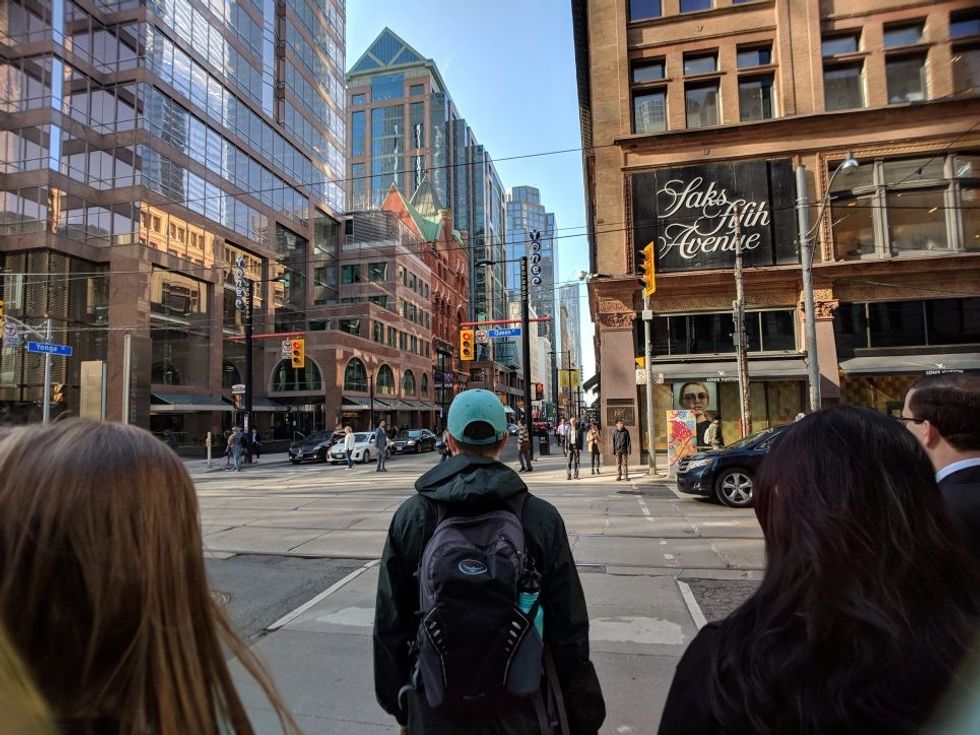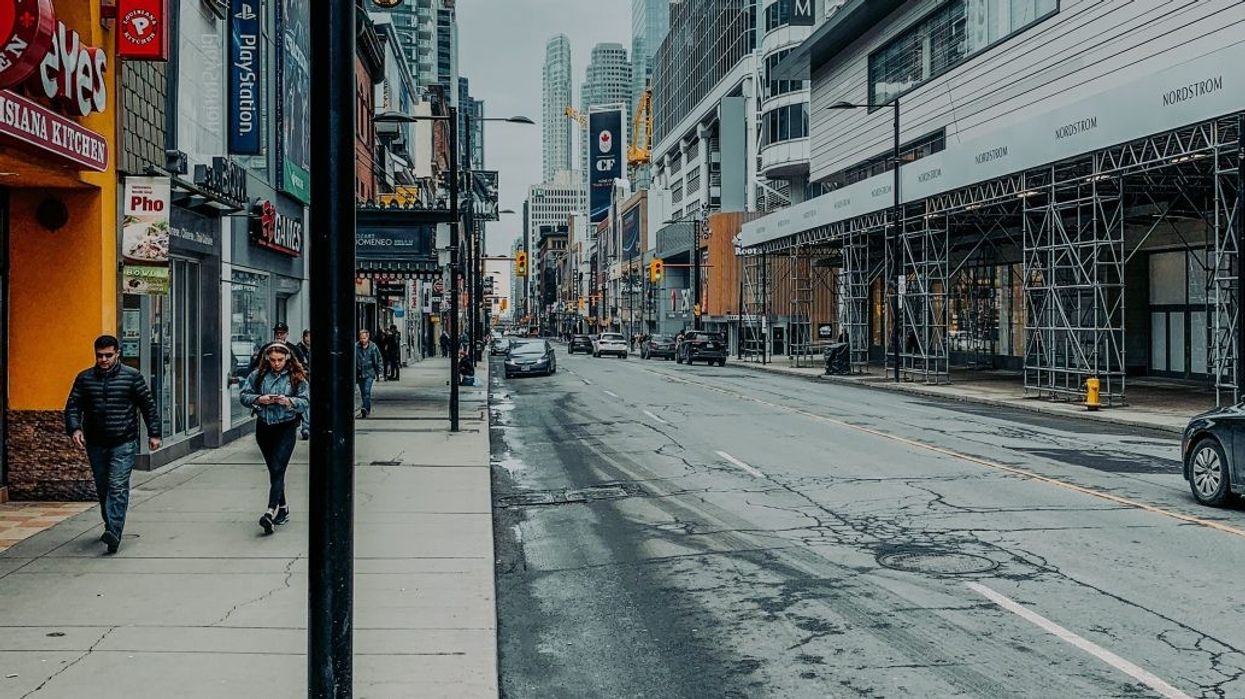Every few years, right on cue, the city decides it must do something about Yonge Street. It’s not hard to understand why. For much of its length, it has become depressingly ordinary, a bit run down, vaguely tacky and, given expectations, hugely disappointing.
Like Toronto, Yonge isn’t what it used to be. Though routinely described as the city’s main drag and its most famous street, it’s neither – and hasn’t been for decades. The clichés that get dragged out every time it comes up in conversation reveal the extent to which some of us have lost touch with the reality of Toronto. Talk about Yonge Street’s “fabled” past, its “storied” history, its “lost glory” has never sounded more hollow.
READ: Forever Yonge: Main Thoroughfare Thrives Amidst Toronto’s Condo Boom
The truth is that Yonge, or at least the part that runs through downtown, was a populist provincial high street that got left behind when Toronto graduated from colonial outpost to big city. The myth of the city’s distinguished past may be a comfort to many, but it’s largely an illusion. This was a community driven by religious, ethnic and class tensions, notorious for its conservatism. In a letter to a friend during his visit in 1842, Charles Dickens referred to “Toronto’s wild and rabid Toryism,” which, he said, was “appalling.” A century later, artist/writer Wyndam Lewis famously called Toronto a “suffocating, sanctimonious icebox.”
Change started in earnest in the mid-1960s and ‘70s when liberalized immigration rules brought a degree of civilization and sophistication to Toronto. Immigrant communities rediscovered neighbourhoods long abandoned by a WASP majority fleeing the city for the suburbs. Little Italy, Little Portugal and later, Koreatown and Little India helped keep downtown alive as did the Gay Village.
And once we no longer had to go Yonge to buy an LP or a book, to go to a club, to hear jazz or rock or eat out, it gradually ceased to be culturally, economically and socially essential. The city responded by bringing the suburbs downtown and giving a green light to projects such as the Eaton Centre, which would suck even more life off Yonge.
But the street’s decline also presented an opportunity for improvement. In 1997, in one of its final acts, Toronto’s last pre-amalgamation council, under then-mayor Barbara Hall, expropriated land on the southeast corner of Yonge and Dundas to make way for a square. It was a bold, imaginative if desperate attempt to staunch the flow of energy and vitality to the rest of the city.
READ: Is It Time To Revisit Yonge-Dundas Square?
Today, Toronto is a city of multiple main streets – King, Queen, College and Bloor among them. All are east-west arteries, not north/south. This reflects the explosion of urbanism primarily to the west and more recently the east. As a result, Yonge is not much more than a way to get from A to B, extremely busy but as much if not more a thoroughfare than a destination.
The city’s only north/south main street is University Ave. Though much reduced from the tree-lined boulevard it once was, it retains enough of its original grandeur to function psychologically and physically as a main street. It honours Toronto and Torontonians as it accommodates both vehicular and pedestrian traffic.

Meanwhile, much of Yonge has become an urban expressway, especially the six-lane stretch above Sheppard and Highway 401. How revealing it was when Mayor John Tory and his north end ally, Councillor David Shiner, stopped a city plan that proposed narrowing Yonge between Finch and Sheppard to four lanes and turning it into neighbourhood main street. In their minds, Yonge is a highway, not a road. A main street that doesn’t welcome pedestrians is not a main street. For the commuting hordes, the alternative to Yonge is the much unloved Don Valley Parkway.
The city is right, of course, that Yonge between College and Queen needs fixing. But to make Yonge a coherent entity, the plan must address the street south from Bloor, even St. Clair, to the waterfront. Planners must also examine the streets running east and west off Yonge between, say, Charles and Dundas. Generally speaking, they complement Yonge but could be better integrated and exploited. Yet they remain an underused asset.
Unfortunately, the city plan, YongeTOmorrow, settles for the sort of boilerplate that leaves readers’ eyes glazed over. Yonge, it tells us, is “an iconic destination in the heart of downtown Toronto where residents and visitors come to live, work and play.” The report offers various street layouts – one lane, no lanes, wider sidewalks, the usual stuff from a car-addicted city like Toronto that wants to pretend it’s progressive.
READ: The Cost Of Having A Car In Toronto Is One We Can No Longer Afford
The first challenge is to re-imagine a new role for the former main street. What new uses can it have? Mistakes like the Eaton Centre can’t be undone, but it’s not too late to save Yonge-Dundas Square, which has been commercialized to the point where even its designers call it “ugly.” Reducing vehicular traffic must also be a priority. Yet as recently as 2011, council’s designated dinosaur, Denzil Minnan-Wong, called for a review of the Yonge/Dundas scramble – one of only two left in the whole city – because it was slowing traffic.
With priorities like this, it’s unlikely change will come to even this short stretch of Yonge. An obvious starting point is the relationship between Yonge and Ryerson University. Indeed, RU’s Student LearningCentre has gone a long way to revitalize Yonge and Gould. Yonge’s other obvious asset is its critical mass of heritage buildings. Perhaps that might inspire the city to reintroduce façade improvement incentives, restoration bonuses and the like.
If the city really hopes to control traffic, it must consider larger measures such as congestion fees, road taxes, registration and parking fees and improved transit. It’s doubtful Yonge can become Toronto’s main street again, but making it a place where people choose to spend time would be a good start.





















